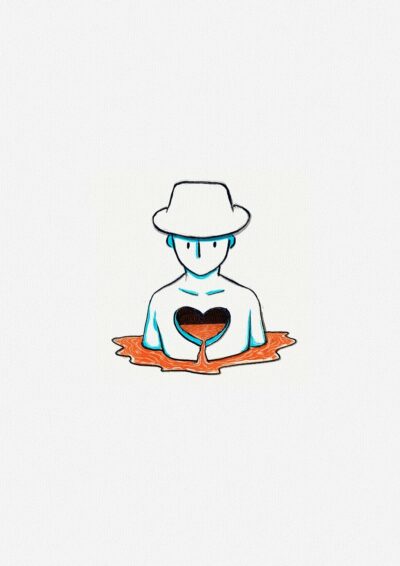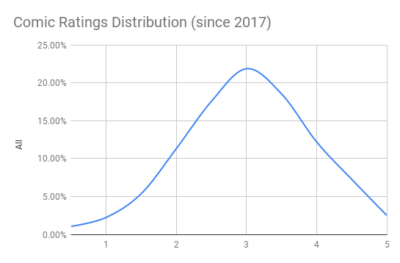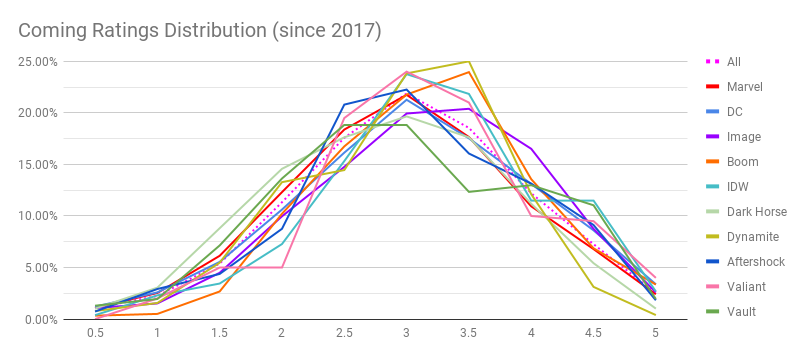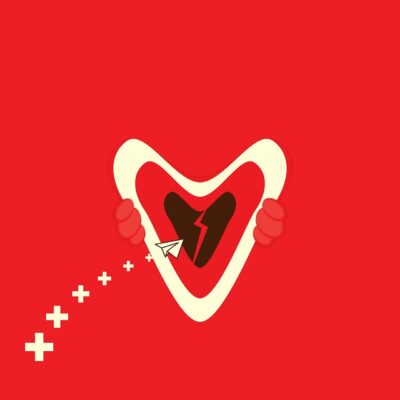I didn’t read any new comics in 2022.
It wasn’t about me. It was about the comics. And, I can prove that with data.
More on that in a moment.

Image by 愚木混株 Cdd20 from Pixabay
I started reading new comics again in 2010 after 15 years away. Since then, I’ve read nearly every Marvel comic from the end of Avengers vs. X-Men in 2012 through the end of 2021. The same is true for DC from the beginning of Rebirth in 2016.
Plus, since 2017 I’ve read nearly everything from Aftershock, Valiant, Vault & Zenescope, plus a wide selection of new titles from Black Mask, Dark Horse, Dynamite, IDW, Image, Mad Cave, Scout, and many, many more!
That adds up to reading a lot of comics every year. Marvel alone reliably releases an average of 14 in-continuity issues every week, with DC chipping in up to 10 more. Then, we add in my other “every comic” publishers, ongoing indie titles I keep up with, and new releases I’m checking out.
That results in an average pull list of 48 comics per week – or about 2500 issues a year. It means I read well over 50% of the new single issue releases in the American comics market.
I kept up that pace for five years. That doesn’t mean I was buying 48 comics a week. My reading habits were a balance of snatching up new digital issues of the things I loved the most, waiting a bit longer for digital discounts on others, and catching up on other comics for a minor subscription fee via Marvel Unlimited (MU), DC Universe (DCU), and Comixology Unlimited (CXU).
2022 began with a big change: the death of Comixology as we knew it.
What used to be a standalone site with a decent web-based reader was absorbed entirely by its owner, Amazon. My ability to easily read and reference issues before they hit MU and DCU was scuttled. Using CXU was over. That knocked out my entire indie comics habit, since the vast majority of them only distribute digitally through that single channel.
I told myself I would enjoy a three month break and then start catching up via MU and DCU.
That never happened because of a more gradual change: I stopped liking comics. Or, at least, I thought I did.
This is where the data comes in.
I’ve tracked every single comic I’ve read from January 2017 to present. I know when I read them, how long I spent reading them, my rating, and my notes on each issue.
I’ve built an entire kingdom of analysis out of over 13,000 single issue data points. It’s a kingdom full of analytics on publishers, titles, creators, and my own reading productivity.

That analysis is also a de facto tracker of my own mood and well-being. If my comic reading spikes incredibly, it’s often a sign of avoiding something else in my life. If it slows considerably, it can be a sign that I’m not managing my time well.
Over time I’ve found that when my ratings take a precipitous dip it can be a sign I am feeling slightly depressed. After all, depression is partly about an absence of joy derived from typically joyful endeavors. If my ratings distribution departs significantly from my near-perfect bell-curve, it’s an indication that something is amiss!
By the end of 2021, my rating trend had been declining for two years straight. My average rating had descended to an all-time low. After I waited out the gap for new 2022 releases to start showing up on MU and DCU I found I had no motivation to read them.
I was afraid that the problem was me. I was broken, or burned out, or depressed. Maybe it was just life, or maybe it was two years of the pandemic. Maybe I’d finally become that curmudgeonly old reader who just wanted comics to be how I remembered them being.
The bottom line was that it seemed like comics stopped bringing me joy.
I let myself believe that for a few months. Believing it made me even sadder. It’s not like I wanted to be disappointed by comics. I love comics! They’re one of the major interests in my life. It’s one I share with my kid. We read them together all the time! We’ve read every single X-comic from 1974 to 1992 out loud!
In fact… I was still loving reading comics with the kid.
Come to think of it, I was loving reading other comics, too.
I was still loving X-Men comics I was reading with the kid in our never-ending run through my X-Men Reading Order. At first I chalked that up to nostalgia, but we were reading plenty of runs I had just missed when I started reading in 1991 and I was loving those too! I was also finding joy in my languidly-paced read of Neil Gaiman’s Sandman.
Was I just coasting on nostalgia for the way comics were made 30 years ago?
I took a closer look at the data.
My ratings decline from 2020 and 2021 was steep, but it was even more steep when looking at Marvel and DC comics in comparison to all releases. In fact, my rating trend outside of Marvel, DC, and Image had been climbing for all of 2021!

While my average rating had descended to an all-time low of 2.516 for new comics in 2021, my overall average rating of comics both old and new had only decreased 2.5% – from 2.957 in 2020, to 2.889 in 2021, and 2.881 in 2022.
And, if I excluded all post-2020 comics, my 2022 average rating had actually risen from 2.986 in 2020 to a massive 3.181 in 2022! That was one of my highest average ratings in any period, and it wasn’t just for comics from the 1990s – it was for comics from many different decades.
I felt a rush of relief. I hadn’t stopped liking comics. I wasn’t depressed – or, at least, this particular data wasn’t showing that I was depressed.
The answer was pretty simple: new comics from Marvel, DC, and Image sucked for me for the past few years.
I was in a unique position to feel that trend because I am one of the relatively few people on the planet to read all of them (and a heck of a lot of everything else, too), and one of even fewer to track all of the data of my reading so meticulously.
This led me to take a step back to compare comic books to another love of mine that I consume voraciously: music.
I try to hear over 2,000 newly-released tracks every year, which means listening to upward of 150 new albums. I don’t always love all of it. My affection for new music waxes and wanes alongside trends in songwriting and production.
Yet, even in a year where my beloved singer-songwriters are scarce and a swell of glitch-pop overtakes the production landscape, I can still find plenty of music to love. As big labels matter less and less in the music industry, there’s no homogenizing force other than artists who are trying to stay on-trend. Even the most-prominent producer can only knock out a few dozen tracks a year. And, plenty of artists aren’t on-trend at all – they’re still behind it, or already ahead of it, or off making their own weird and wonderful sounds.
Even when I don’t love the music trends in any given year I can still find plenty of music to love.
Comics are extremely different.
Marvel and DC account for between a quarter and a third of all new American single issue releases. The Big Two are chained to each other, endlessly see-sawing back and forth across the same trends and big story beats in their comics. Each of them are controlled by a relatively small group of writers (who are often traded back and forth and back again). The writers are overseen by an even smaller group of editors, many of whom who have been around for decades. Editors are in turn managed by a bland gang of capitalists at their parent companies.
That’s an astounding amount of homogeneity.
Even in the worst periods at each publisher there have been certain combinations of writers and artists with editors who create something remarkable. But those remarkable books can be diamonds in the rough.
Beyond that, there is also the homogenizing force of the direct market – the comic shops.
Consumers are never purchasing comic books directly from publishers. Comic shops order what they think they can sell to consumers. Sure, that includes people making their personal pre-orders through their shops, but comic publishers don’t see that. They just know the aggregate numbers, and comic shops beef up those numbers based on what they can sell from the shelf and what they think will continue to sell as backstock.
If I’m enjoying cheerful, colorful books full of glee and queer characters created by up-and-comers while the direct market is betting heavily on a nostalgic return to brooding straight men of the Silver Age written by tried-and-true favorites, then the release of the stuff I enjoy slows to a trickle.
As a result, it’s incredibly easy for all of comics – and, especially, all of mainstream, major-label comics – to veer into a direction I find dull and then get mired there. Sometimes for years. That’s exactly what happened when I originally fell out of love with comics back in 1996. Even though I read many fewer books back then, I could feel the industry veering away from the aspects I loved.
I think I’ve been feeling that again over the past two years.
Of course, my feelings have little to do with the success of the comic industry as a whole. It’s booming! However, I have a long, long history of disliking the sorts of comics beloved by both comic shops and the majority of other readers. The whole reason I started reading all of the comics every year is I could not find anyone whose recommendations I trusted! I wanted to branch out and read more comics, but whenever I took anyone else’s advice I wound up reading more popular comics I disliked and missed out on weird stuff I dig.
Over my five years of voracious reading, each year a handful of the comics that topped my “Best of Year” lists were entirely unmentioned across the rest of the comic book social media landscape, while many critical favorites had found a home on my “Worst of the Year” lists before I even knew they were favorites.
Once, a comics-content-creating colleague asked why I “don’t like any of the good stuff.” It’s a sentiment I encounter a lot, including from some trolls who are convinced I am a hateful villain because I think certain big-time authors kinda suck.
When I encounter these opinions, I often feel defensive of my taste. It makes me feel like I’m failing comics by disliking them – like I’m some sort of mutated monster for not being in on the mainstream opinion. Could that be true, in spite of my carefully cultivated my taste over the course of 30 years of reading tens of thousands of comics, including over 50% of the market for the past half decade.
Or, maybe do I have more data to work with than they do when it comes to defining what I like and don’t like?
I should have replied, “Why are you so convinced that there is an objective ‘good’ in comics?”
Whether it’s music or comics, I don’t do all this consuming to gatekeep others from my hobbies. If anything, I do it to fling the gates farther open by being the person who has seen and heard more than anyone else I know or may ever meet. I do it to force myself to be open to new experiences. I do it to re-test my preferences so I don’t fall into boring habits. I do it to keep myself from being gaslit by public opinion and how it often conflates popularity and quality.
That brings me back to 2022.
I didn’t read any new comics in 2022. It was the right thing to do. At least half of what I was reading in 2021 was not bringing me joy (and more than half, if we only look at Marvel and DC). It wasn’t because I was angry or depressed. It was because a wide swath of comics were moving in different direction than I was.
That’s okay. That’s life! If we hadn’t moved in separate directions back in 1996 I would’ve never learned how to build webpages or to write my own songs. And, I would’ve never had the joy of returning to comics in 2010 and building the hundreds of comic guides that comprise Crushing Comics!
I’ve read a few new comics this week to kick off 2023. Some of them were great. Some of them weren’t. I don’t know if I’ll ever escalate back to reading all of Marvel, DC, and a half a dozen other publishers. That’s also okay. It doesn’t mean that I’ve stopped liking comics. It doesn’t mean I’m depressed. My not enjoying popular comics doesn’t make me a comic-hating monster.
And, I can prove that with data.
